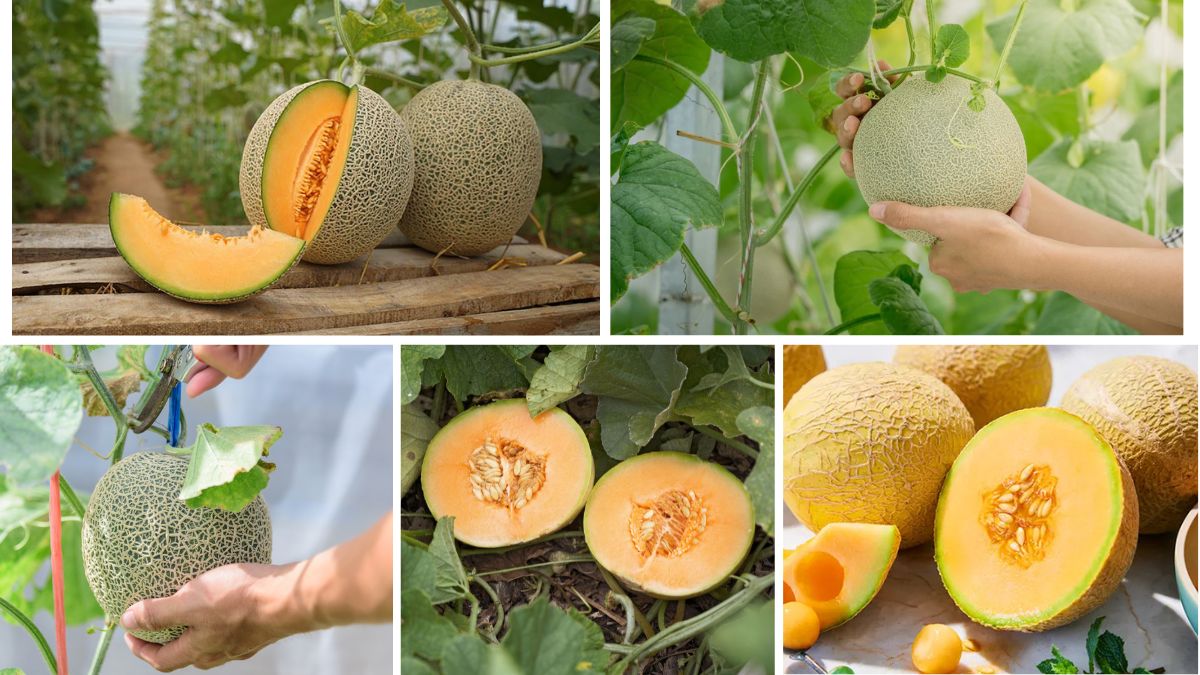Cantaloupe (Cucumis melo var. cantalupensis), also known as muskmelon or rockmelon depending on the region, is one of the most widely consumed melons worldwide. Recognized for its sweet, aromatic flesh and refreshing taste, cantaloupe is enjoyed fresh, in fruit salads, juices, and desserts, and is valued for its nutritional benefits. As global demand rises, countries compete to produce this fruit on a large scale. Recent agricultural data reveal that China is the world’s top producer of cantaloupes by a very large margin, contributing more than half of the global output.
This article explores the factors behind China’s dominance, the global production scenario, cultivation practices, nutritional and economic value, challenges, and implications for future research.
Global Overview of Cantaloupe Production

Cantaloupes thrive in warm, sunny climates with well-drained soils, making them ideal for cultivation in Asia, the Middle East, parts of Europe, Africa, and the Americas. According to Food and Agriculture Organization (FAO) statistics, global cantaloupe and muskmelon production exceeds 27 million metric tonnes annually. The distribution, however, is heavily skewed toward Asia, especially China.
Top Cantaloupe-Producing Countries (Recent FAO Estimates)
- China – ~17 million tonnes (≈ 63% of global production)
- Turkey – ~1.7 million tonnes
- India – ~1.3 million tonnes
- Iran – ~1.2 million tonnes
- Egypt – ~1.0 million tonnes
- United States – ~900,000 tonnes
- Indonesia – ~850,000 tonnes
- Spain – ~700,000 tonnes
- Afghanistan – ~650,000 tonnes
- Kazakhstan – ~550,000 tonnes
China’s production volume is nearly ten times larger than that of the second-largest producer, Turkey, highlighting its unparalleled dominance in the cantaloupe market.
Why China Dominates Cantaloupe Production
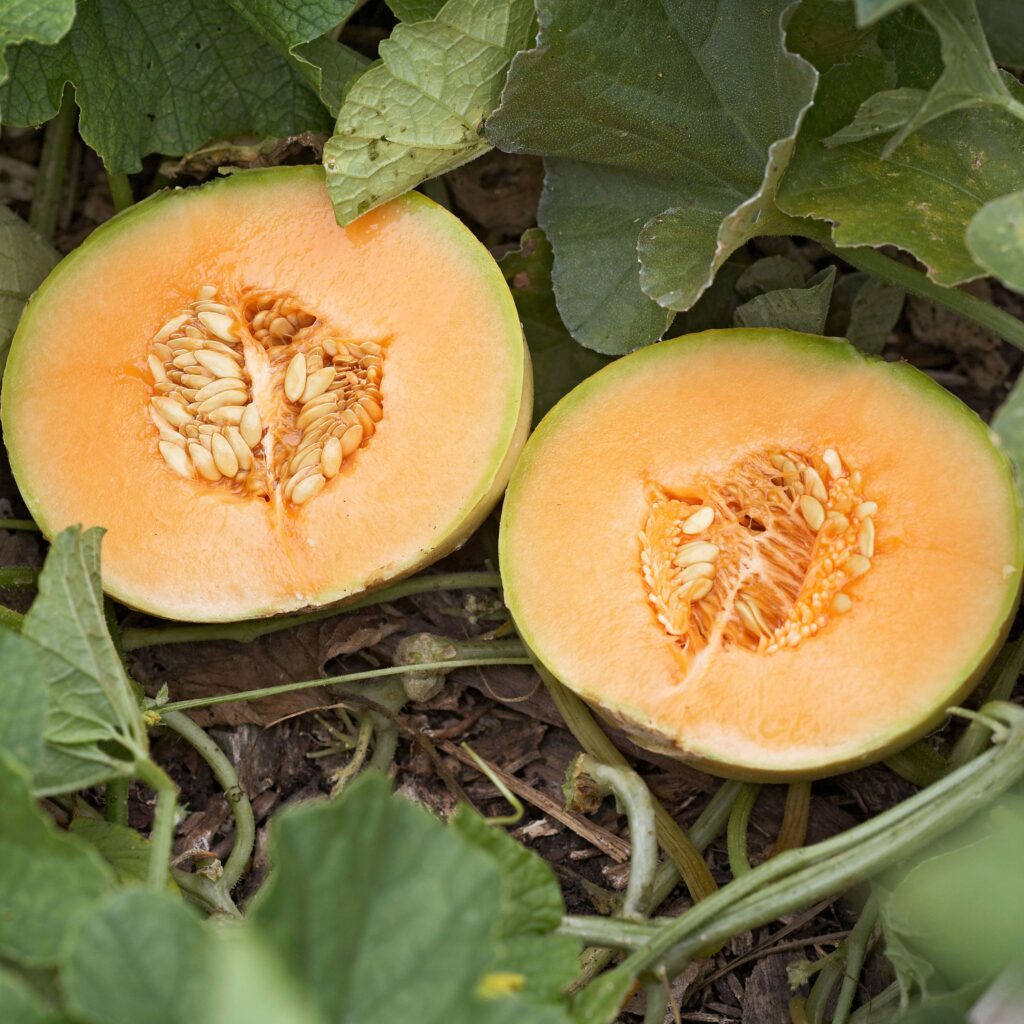
China’s leadership is not coincidental—it results from a combination of agricultural advantages, market demand, and government support.
1. Extensive Cultivable Land
China has vast tracts of arable land suitable for melon cultivation. The Xinjiang, Gansu, and Inner Mongolia regions are especially famous for producing high-quality cantaloupes, thanks to their sunny days, cool nights, and low humidity.
2. Diverse Climatic Zones
The country’s varied climate allows for staggered planting and harvesting schedules, enabling year-round availability in some regions.
3. Strong Domestic Demand
Melons, including cantaloupes, are an integral part of the Chinese diet. They are widely consumed fresh and gifted during festivals, which ensures high internal demand.
4. Government and Research Support
China invests in agricultural research to develop improved hybrids that are sweeter, disease-resistant, and have a longer shelf life. Agricultural extension programs also train farmers in modern melon-growing techniques.
5. Efficient Supply Chains
The country has built robust distribution networks, from farms to wholesale markets, ensuring fresh melons reach urban centers quickly.
Cantaloupe Cultivation in China – Practices and Productivity
Climate & Soil
Cantaloupes need warm weather (optimal temperature: 24–30°C) and at least 8–10 hours of sunlight daily. Sandy loam soils rich in organic matter and with pH 6–7.5 are ideal.
Planting Seasons
- Spring-summer crop: Sown in March–April, harvested in June–July.
- Autumn crop: Sown in July–August, harvested in October–November.
- Protected cultivation: Greenhouses allow off-season production.
Cultivation Practices
- Varieties: China grows a range of cantaloupe varieties, from netted skin to smooth skin, tailored to consumer preferences. Famous types include Hami melons from Xinjiang.
- Irrigation: Drip irrigation is common, ensuring water efficiency.
- Fertilization: Balanced application of nitrogen, phosphorus, and potassium supports fruit size and sweetness.
- Pest & Disease Management: Common threats include powdery mildew, downy mildew, aphids, and fruit flies. Integrated pest management (IPM) is promoted.
- Pollination: Bees are often introduced to boost pollination and fruit set.
Harvesting
Fruits are harvested when the netting on the rind is well developed, the aroma is strong, and the stem begins to crack near the fruit. Proper timing is crucial for sweetness and texture.
Nutritional Value and Health Benefits of Cantaloupe
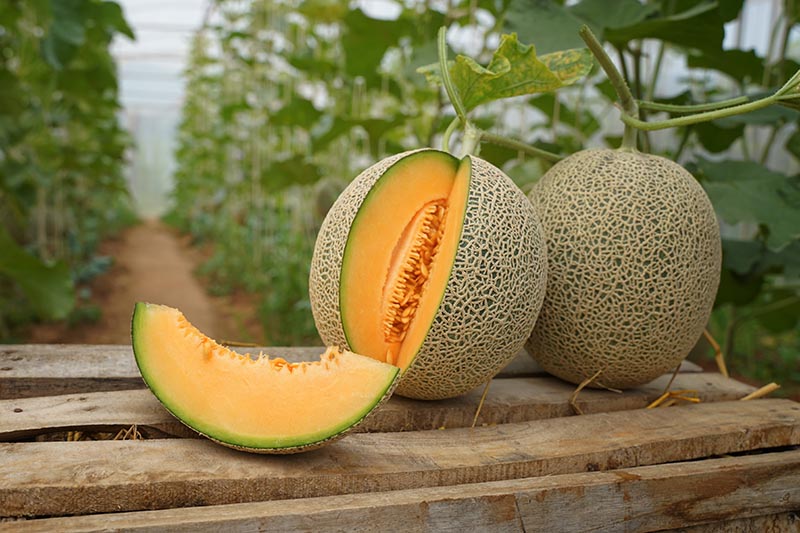
Cantaloupe is more than a sweet treat—it is a nutrient powerhouse.
Nutritional Profile (per 100g)
- Calories: ~34 kcal
- Water content: ~90%
- Vitamin C: ~36.7 mg (over 60% of daily requirement)
- Vitamin A (Beta-carotene): ~3,382 IU
- Potassium: ~267 mg
- Folate: ~21 μg
- Fiber: ~0.9 g
Health Benefits
- Hydration: High water content keeps the body hydrated.
- Eye Health: Beta-carotene supports vision and may prevent macular degeneration.
- Immunity Boost: Vitamin C strengthens the immune system.
- Heart Health: Potassium helps regulate blood pressure.
- Skin & Hair: Vitamin A and antioxidants promote healthy skin and hair.
- Digestive Aid: Fiber supports gut health.
Economic Importance
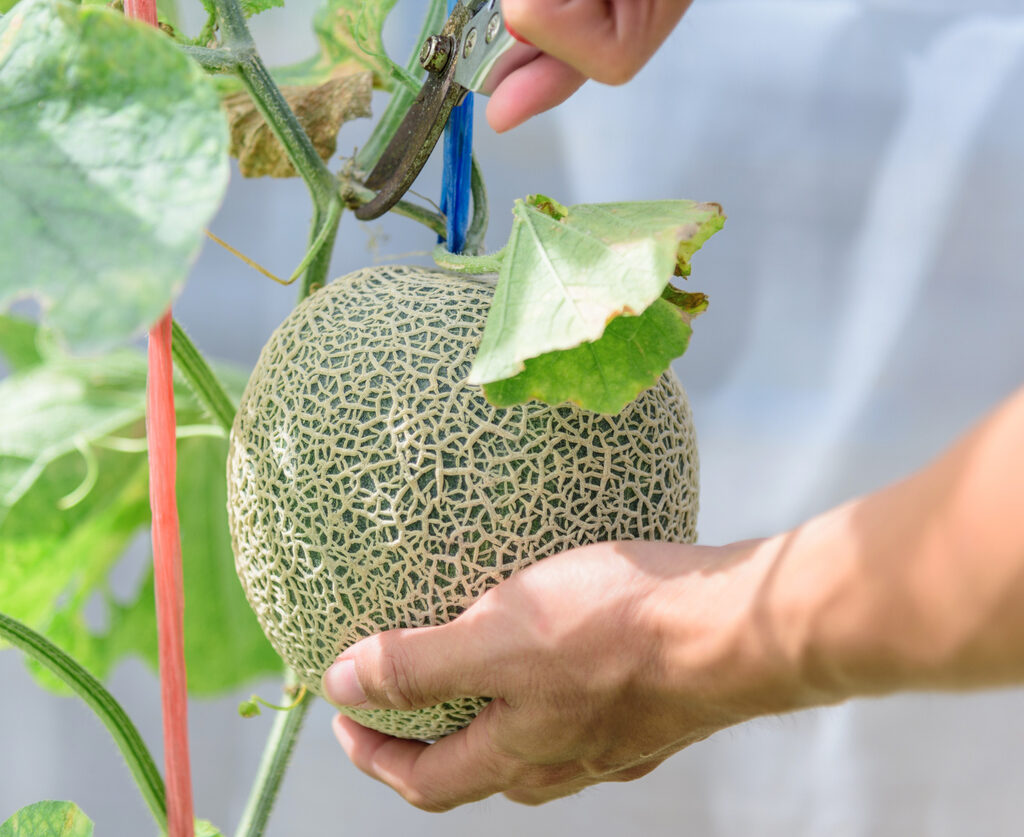
For Farmers
- High Market Demand: Both fresh consumption and processing industries (juice, jam, candies) drive sales.
- Quick Returns: Short growing cycle (70–100 days) allows multiple crops per year.
- Profitability: High yields and strong domestic demand ensure good farm incomes.
For China’s Economy
- Domestic Market: Melons are among the top-selling fruits in Chinese markets.
- Export Potential: While most production is consumed domestically, China exports premium melons to neighboring countries.
- Rural Employment: Cantaloupe farming supports jobs in cultivation, harvesting, packing, and logistics.
Global Cantaloupe Trade
While China dominates production, other countries play key roles in export markets. For example:
- Spain and Turkey export large quantities to the European Union.
- United States exports to Canada and Asia.
- Guatemala and Honduras are major suppliers to the North American market.
China’s exports are relatively small compared to its production due to massive domestic consumption.
Challenges in Cantaloupe Production
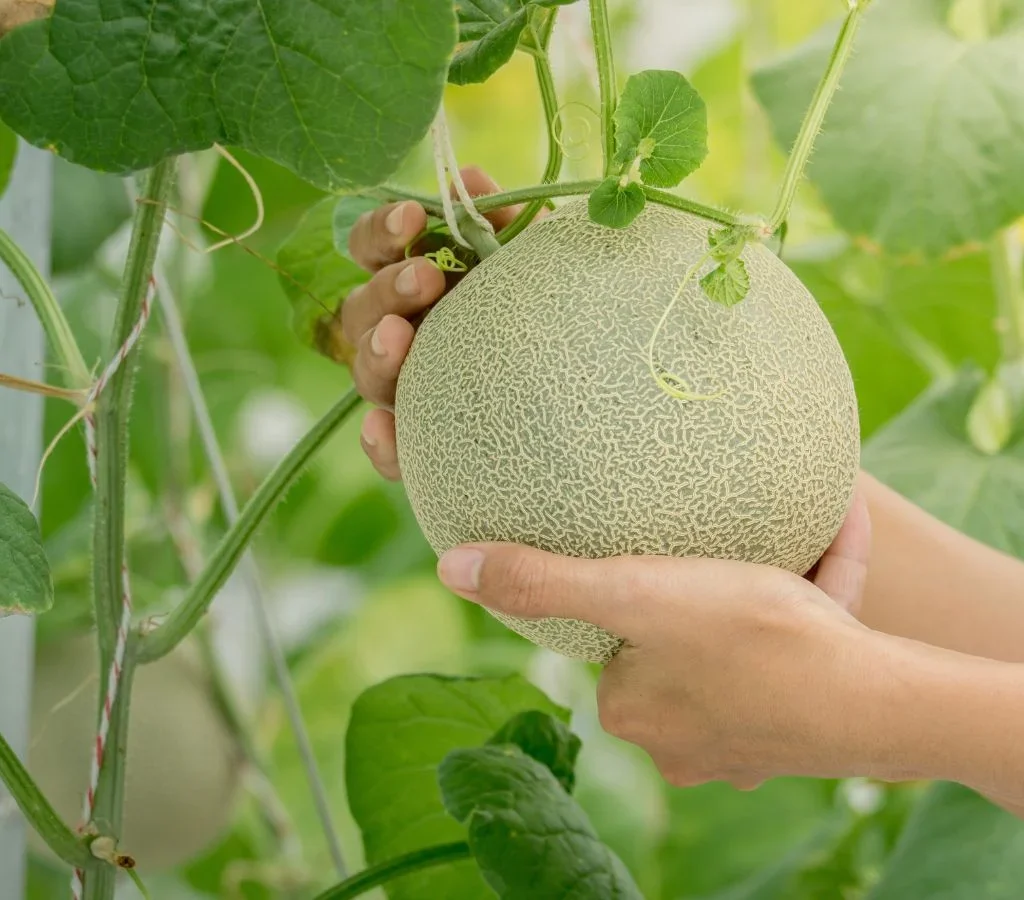
- Disease Outbreaks: Powdery mildew and viruses can significantly reduce yields.
- Post-Harvest Losses: Without proper storage, cantaloupes have a short shelf life.
- Climate Change: Erratic rainfall, temperature fluctuations, and extreme heat waves affect quality and yield.
- Market Saturation: During peak harvest season, prices may drop due to oversupply.
- Export Limitations: Quality standards and logistics challenges limit China’s share in global cantaloupe exports.
Strategies for Sustainable Growth
- Variety Improvement: Develop cultivars with extended shelf life and resistance to major diseases.
- Cold Chain Infrastructure: Expand refrigerated storage and transport to reduce losses.
- Organic Cultivation: Tap into the growing market for chemical-free fruits.
- Export Development: Target premium markets with high-quality melons.
- Farmer Education: Provide training in modern farming and post-harvest handling.
Research Opportunities for a Thesis
A thesis on this topic can explore:
- Comparative analysis of production efficiencies between China and other top producers.
- Impact of climate variability on cantaloupe yields.
- Genetic diversity and breeding programs for high-quality melons.
- Consumer preferences and market trends in domestic vs. export markets.
- Sustainable farming practices for melons in water-scarce regions.
Conclusion
China’s position as the world’s largest producer of cantaloupes is the result of vast cultivation areas, favorable climates, strong domestic demand, and continuous agricultural innovation. Producing more than 60% of the world’s total supply, China has transformed cantaloupe farming into a significant agricultural sector.
While other countries like Turkey, India, and Iran also produce substantial quantities, none come close to China’s scale. However, challenges such as diseases, post-harvest losses, and climate impacts must be addressed to ensure sustainability.
For researchers and policymakers, cantaloupe production offers valuable insights into how targeted agricultural strategies can elevate a country to global leadership in a crop—an example highly relevant to food security, economic development, and global trade.
